Wastewater Treatment Plant (WWTP)
Important Questions on Wastewater Treatment Plant (WWTP)
The diagram shows a typical wastewater treatment process.
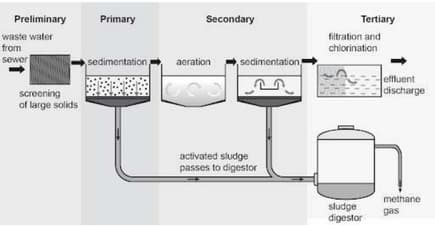
What makes the residue from sludge digestor suitable as organic manure.
The diagram shows a typical wastewater treatment process.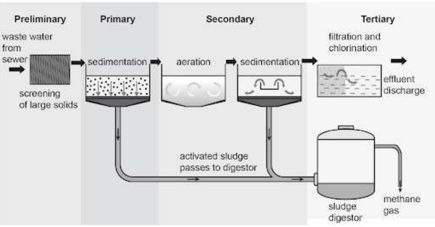
What is the purpose of chlorination in the wastewater treatment process?
The diagram shows a typical wastewater treatment process.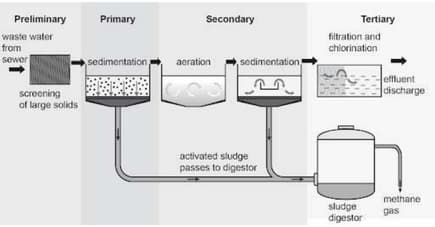
What can be concluded about wastewater treatment process from the diagram?
Why do you think we should treat waste in a biogas plant?
Differentiate between primary and secondary treatments in treating wastewater.
Sanju's family went to a resort this summer's holiday. The resort had a very nice swimming pool and the family had a wonderful time at the resort. One day, Sanju observed that one of the resort's employee was adding some chemical to the pool. Sanju asked about this to his father. His father answered that the chemical was put for purifying swimming pool's water. Sanju still has several questions that his father was unable to answer.
Can you help him clear up his following doubt:
(a) What kind of chemical(s) were put in the pool?
(b) What kind of impurities does these chemical remove?

Nitin has recently learned about waste water treatment in his school. His mother took him to a waste water treatment facility. He discovered that waste water containing cans, plastic bags, pebbles, faeces, and rags was moving within the wastewater in treatment plant. The worker said that after a few steps, all pollutants would be eliminated, and the water will be used for other activities.
Answer the following questions:
a) Which part of a wastewater treatment plant removes large objects like cans, plastic packets and rags?
b) How pebbles are removed?
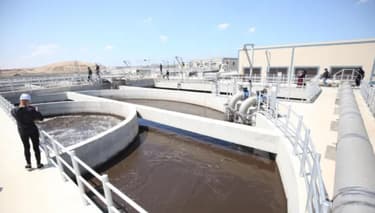
Santosh is a fisherman and used to go fishing every day. One day, when he reached near the riverbank, he discovered numerous dead fish on the riverbank. This is because factories discharge many chemical wastes into the water bodies. This creates disturbance in the aquatic life and leads to the death of many aquatic animals such as fishes, crabs, etc.

From the above understanding, explain the types of impurities present in sewage.
Differentiate between sludge and scum.
Mr. Bose while explaining the three "R"s to his class focussed on wastewater treatment as well. He said "Most of the things in this world can be recycled and reused, that is why we rely on the fact that matter can not be created nor be destroyed but can be transformed from one form into another."
He further added, "One such recycling can be seen when wastewater or sewage is treated to remove its contamination to make it usable or to dispose them into large water bodies. The best way out of waste is the production of energy source."
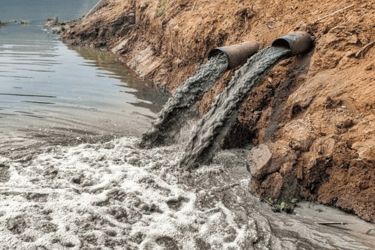
Vaidehi out of curiosity questioned, Mr. Bose, "How can wastewater or sewage be helpful in energy production?" Could you provide answer to Vaidehi's question?
Is incineration a better option than burning of wastes? Why?
Which one of these is a biological process of treating wastewater?
Stage of wastewater treatment for removing large particles,
How can we convert sludge into useful substances?
Sludge can be converted into useful substances through
Name the following by unscrambling the jumbled letters: WOWARKSTER
The place where water is treated and purified.
In which part of the wastewater treatment plant are oil and grease removed from water?
Given below is a jumbled sequence of the processes involved in a wastewater treatment plant. Arrange them in their correct sequence.
(a) Sludge is scraped out and skimmer removes the floating grease.
(b) Water is made to settle in a large tank with a slope in the middle.
(c) Large objects like plastic bags are removed by passing wastewater through bar screens.
(d) Sand, grit and pebbles are made to settle by decreasing the speed of incoming wastewater.
(e) Wastewater enters a grit and sand removal tank.
Outline the main steps used in sewage treatment.
What processes does sewage treatment involve?

